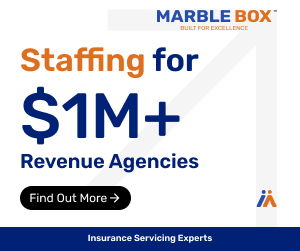An AgencyEquity.com Exclusive
If you haven’t looked at agency management software programs in a couple of years, it’s time to look again. The segment of the software industry serving insurance agencies has been hard at work – and they’ve made several improvements that make their newer systems more useful than ever.
Practice management technology aims to take as many business processes as possible and automate them. The idea is to minimize the amount of time your selling staff has to spend filing and retrieving paperwork, and reduce errors in the process.
The insurance industry has been an early adopter of many of these technologies. But recent advancements in programming and computer technology have made possible a number of significant improvements in recent years.
Why? The issue has to do with the product-specific nature of the industry, according to Daniel Ochoa of Agency Matrix. Insurance agents have all the same issues with billing and document retrieval as other professionals. But they regularly have to retrieve current policy information directly from the carriers themselves.
At the center of these efforts is ACORD (Association for Cooperative Operations Research and Development), a global, nonprofit standards development organization serving the insurance industry and related financial services industries. ACORD’s mission is to facilitate the development of open consensus data standards and standard forms. The Association is the coordinating agency working towards full data integration and cross-platform implementation across the insurance industry.
While direct data dumps from carrier servers down to the agency level have been possible for the past 15 to 20 years, there have been implementation difficulties in scaling a given computer protocol across 8 to 10 different carriers who often represent different insurance lines. But new breakthroughs in computing – and an increased willingness on the part of carriers to standardize, have now made it possible for software companies like AgencyMatrix and InsurancePro to automate a nightly “data dump,” updating an agency’s servers with current policy information for that agency’s clients, up to the close of the previous day.
Tablets and Smartphones
While the technology has finally become viable on PC-based platforms, we haven’t yet seen a massive build-out to embrace tablet systems, such as the iPad. To do so would require a substantial additional investment in programming on the part of the software companies. However, Vertafore has recently rolled out substantial support for Tablet for agents with its AM360 software, allowing them to update their client information directly into the system via a tablet. And more advances are on the way. “We have a development team working full-time on UI [user interface – Ed.] and mobility,” says Bruce Winterburn, Vertafore’s Vice President of Industry Relations. "That’s their core responsibility.”
Vertafore’s signature software platform, the 360, is iPod capable, Winterburn says. But they have not yet fully integrated smartphones. “With the true handheld devices, it’s more of a real estate issue,” explains Winterburn.” There’s only so much screen space available on a hand-held, which somewhat limits application for those devices.”
Work-Flow Automation
Recent generations of practice management software have come with tremendous advances in work-flow automation. As industry experts and programmers develop a more detailed implementation of back-office procedures and best practices. The result is more efficient allocation of man-hours.
Newer generations of software have built robust time management tracking and reporting features in the software – allowing agency principals to see where their limited man-hours are going, and how long each step of the sales and service processes take.
“There’s a stopwatch at every step of the process,” says Winterburn, whose company is working to make the user interface more and more invisible. A big part of that process, of course, starts with seemingly small things. “When you enter a date, you shouldn’t have to key in every digit,” said Winterburn. “You shouldn’t have to worry about format. The software should do it for you, and you’re off to the next task.”
Workflow automation can also generate an easily grasped list of unattended tasks, so managers can easily identify where staff is falling behind and where more resources need to be allocated.












